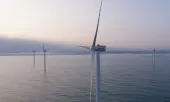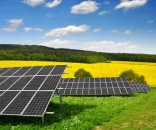
India's solar expansion unfazed by low tariffs
The sector enjoys higher interest rates in India compared to other leading renewable countries.
Despite low tariffs, project developers in India still show interest in building solar portfolios depending on their project pipeline, cost of financing, ability to negotiate favourable equipment contracts and their internal rate of return (IRR) expectations, according to a study by the Institute for Energy Economics and Financial Analysis (IEEFA) and JMK Research & Analytics.
Currently, tariffs in the Indian solar sector, hovering at Rs2.50-2.87/kWh, have stabilised, with rates about 20-30% below the cost of existing thermal power in India, and up to half the price of new coal-fired power.
With tariffs achieved as low as Rs2.5/kWh, developers have reduced their return expectations from 14% to 12%, according to IEEFA energy economist Vibhuti Garg.
“Whilst this rate is very competitive compared to thermal plant tariffs, and lucrative for power distribution companies entering long-term power purchase agreements, this is a floor for developers if they want to make money,” Garg says.
JMK Research’s Jyoti Gulia noted that conditions in India are very different from other energy markets. “Interest rates, module costs, and capacity utilisation factors (CUF) in particular, have a major impact on solar tariffs and project returns,” she said.
Significantly higher interest rates in India compared to other leading renewable energy countries is one of the reasons for higher domestic tariffs. In addition, capacity utilisation factors differ across states in India, in light of significant variations in solar resource quality.
“Any drop in utilisation rates has a significant impact on project returns. As per our report findings, a 3% drop in CUF results in over 7% fall in equity returns,” the study noted.
The study also found that Solar Energy Corporation of India (SECI) and NTPC have played a key role in building international investor interest, with contractual certainty in place given counterparty and payment risk assurance from these central government agencies.













 Advertise
Advertise











